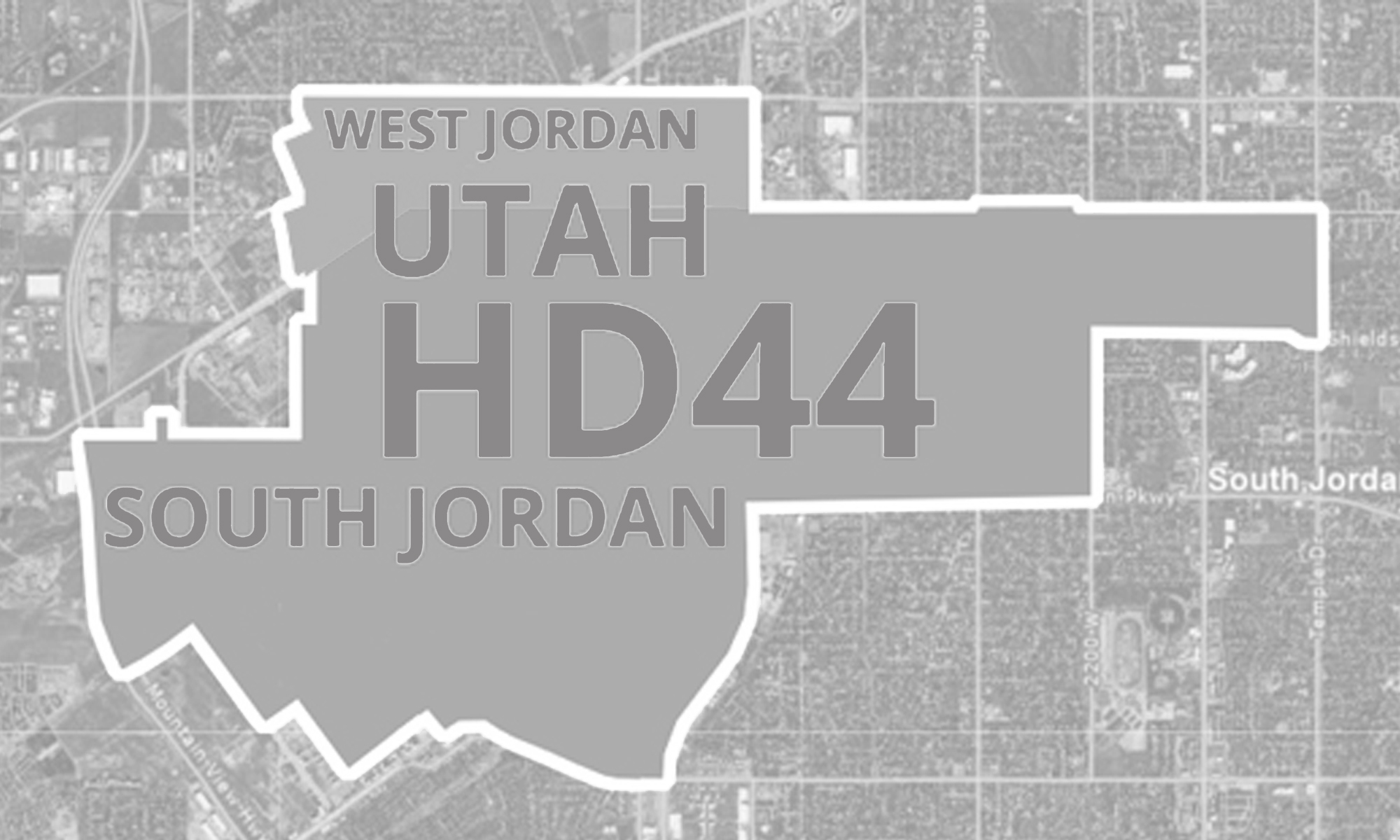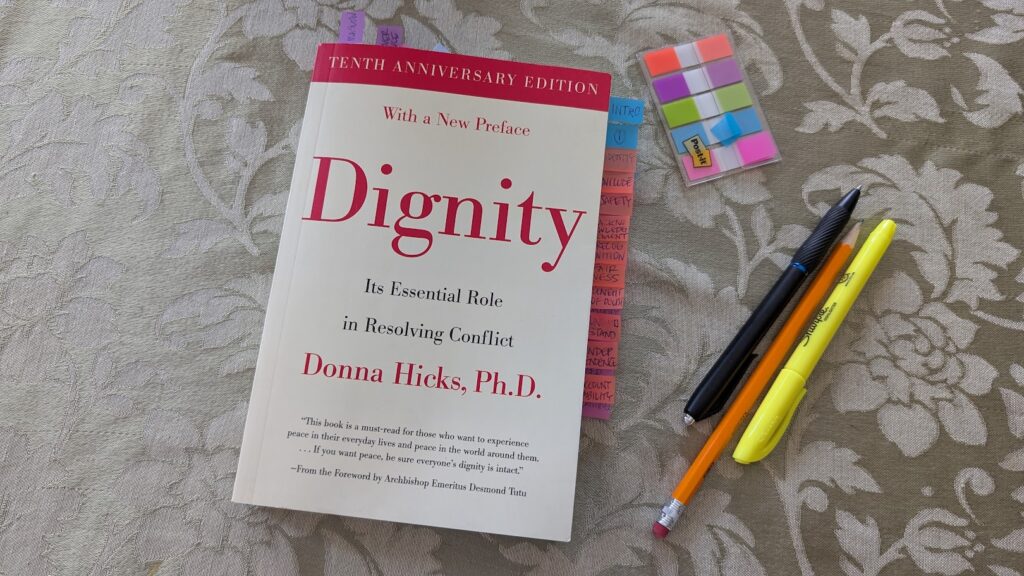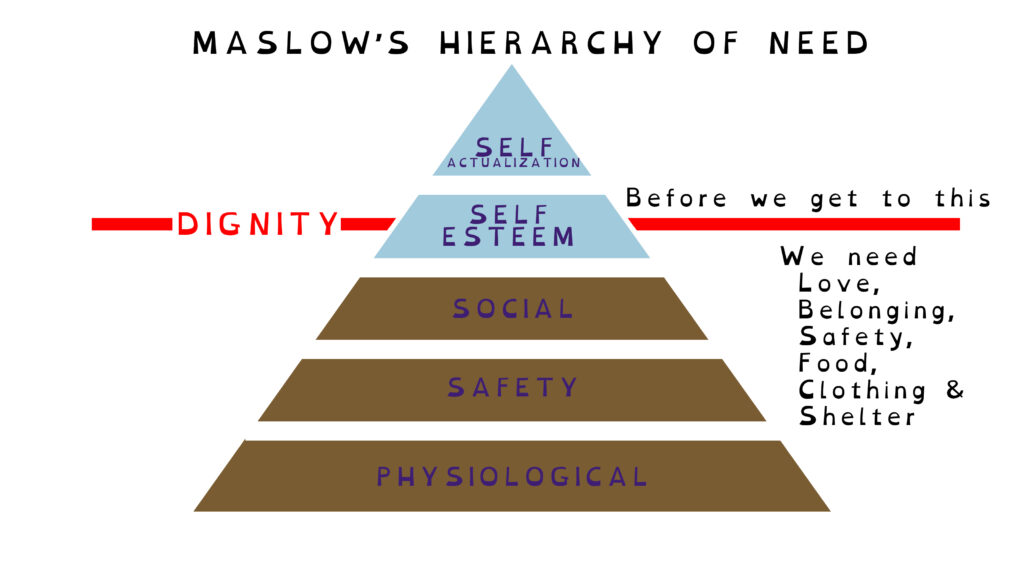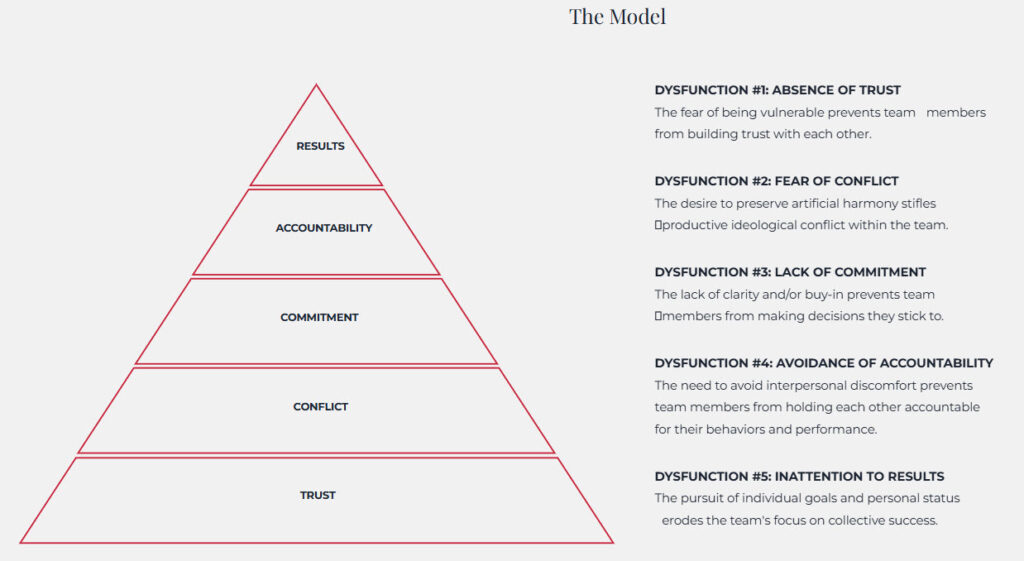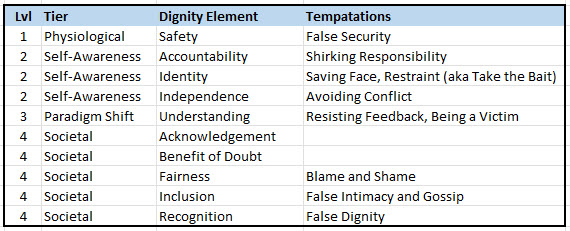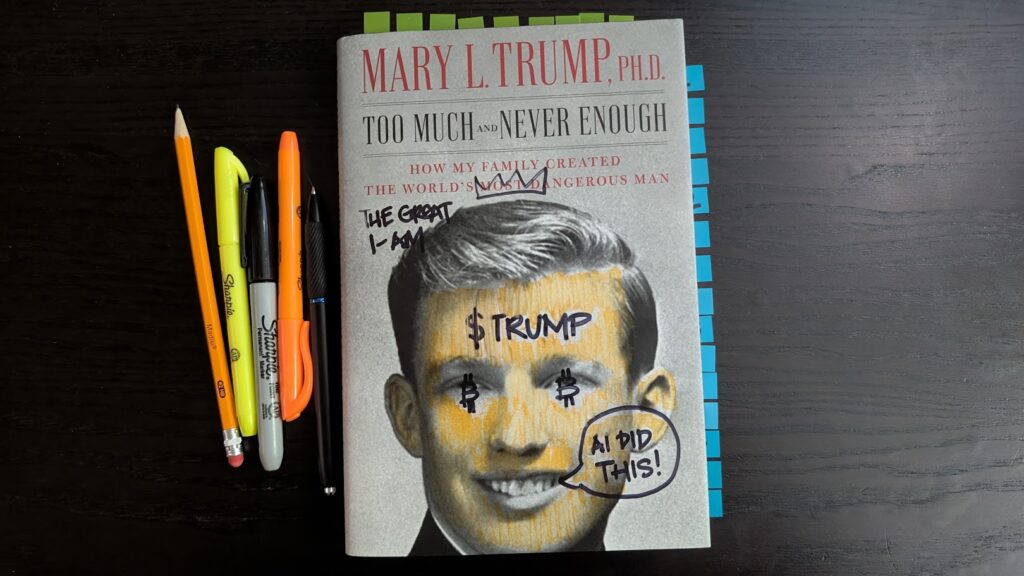
This is a 2025 review of “Too Much and Never Enough: How my Family Created the World’s Most Dangerous Man” by Mary L. Trump PhD. I’m saying that, but I want to start this review by quoting another book, which led me to this one. In “Dignity” by Donna Hicks, PhD in her chapter on Safety p.55 she says:
“What is important here is to know the dignity violations we experienced. To know them is to name them, to give them legitimacy and validation. And knowing them is the first step toward healing. The problem… is our strong loyalty to our caretakers, especially if they are parents, which makes it difficult to view them as anything but good.”
Family loyalty is so often the source of what makes us broken.
Introduction
“Too Much and Never Enough” starts in prologue to say some really prescient things for DJT’s second term in office. Observations made in 2017 were that his administration and his party are subsumed by his politics of grievance and entitlement. It goes on to say “He continues to be protected from his own disasters in the White House, where a claque of loyalists applauds his every pronouncement or covers up his possible criminal negligence by normalizing it to the point that we’ve become numb to the accumulating transgressions.“
A contemporary case in point: with hundreds of billions of dollars on the table, on September 4, 2025 oligarchs cluster around DJT to offer their platitudes and flattery.
Near the end of the book, Mary L. Trump concludes on p.203 that “The through line from Donald’s early, destructive behavior that Fred actively encouraged to the media’s unwillingness to challenge him and the Republican Party’s willingness to turn a blind eye to the daily corruption he has committed since January 20, 2017, have led to the impending collapse of this once great nation’s economy, democracy, and health.” This was published before the January 6, 2021 United States Capitol attack . It was before DJT’s second term, and before the existence of Project 2025.
She goes on to say “The deafening silence in response to such a blatant display of sociopathic disregard for human life or the consequences for one’s actions, on the other hand, fills me with despair and reminds me that Donald isn’t really the problem after all.“. And she is right for saying that.
The House Down the Hill
In the Netflix fictional horror series The Haunting of Hill House, a fractured family confronts haunting memories of their old home. Starting in Chapter 1 “The House” of Mary L. Trump’s book I can already see parallels. The profound incapacity of empathy from Fred Trump, the emotional withdrawal of Mary Trump, reinforced by a lack of self-awareness; or observance of profound character flaws creates unfulfilled needs of the children, and a “kind of grievance and behaviors – including bullying,… aggressiveness, and disrespect – that served their purpose in the moment and became problematic over time.” (p.27) The family is successful and yet completely dysfunctional. And there are layers to the story. Generations are described to lead us to the present day.
“Everyone in my family experienced a strange combination of privilege and neglect.” (p.140)
Much of the book describes the Trump family growing up “white poor” wealthy, self-absorbed, and chronically disconnected; with a father’s narcissistic interest in the boys becoming “killers” through showmanship, entitlement, misogyny, outright lies, fear, and enablement.
Relationships are transactional. Outside their circle, there is more than one reference to other people as “the rubes”. Without a prerequisite paradigm shift, members of the family were often “rubes” without knowing it.
Religion
Possibly a side note, I find it interesting how religion is and isn’t brought up in the book. There is never any discussions of faith practiced in the home. There are mentions that Mary L. Trump’s aunt Maryellen converts to Catholicism for her first marriage, and DJT’s daughter Ivanka converts to Judaism for her marriage to Jared Kushner.
- Friedrich Trump and Elizabeth Christ (paternal great grandparents) are both from Germany, which was primarily Protestant then.
- Fred Trump (paternal grandparent) is born in the US. His wife Mary Anne MacLeod is from Scotland, which was primarily Presbyterian (a reformed version of Protestantism) then.
- In the early 1900s, the Jamaica Estates area of Queens, New York, was primarily home to upper-middle-class Protestants.
- Norman Vincent Peale (mentioned below) was a Protestant
I make a guess that the family was Protestant, but not practicing? The 2016 gaff by DJT about “Two Corinthians” instead of referring to that book of the bible as “Second Corinthians” really makes the case that the household wasn’t well-versed in religion.
Where I would hope to see a sense of awe, or reverence, there is none.
The real influence of religion appears to be of the Prosperity Gospel. Norman Vincent Peale’s book “The Power of Positive Thinking” appears to have a powerful influence on Fred Trump in the 1950’s. It was enough for Fred Trump to join the Marble Collegiate Church in Manhatten, although Mary L. Trump notes that he and his family rarely attended. This is the church where DJT married his first wife Ivana.
“Believe in yourself! Have faith in your abilities!… A sense of inferiority and inadequacy interferes with the attainment of your hopes, but self-confidence leads to self-realization and successful achievement.”
Norman Vincent Peale, The Power of Positive Thinking
The problem of the quote aside, with hubris and self-confidence a monster is made.
The First Son, Sacrificed
Much of Mary L. Trump’s book focuses on the relationship of Fred Trump and two of his sons: Freddy Trump (Mary’s father) and Donald. As archaic as it sounds, as the eldest son and namesake, Freddy was the heir apparent, and subject of intense focus and scrutiny from his father.
“Fred hated it when his oldest son screwed up or failed to intuit what was required of him, but he hated it even more when, after being take to task, Freddy apologized. “Sorry, Dad,” Fred would mock him. Fred wanted his oldest son to be a “killer” in his parlance… and he was temperamentally the opposite of that.” (p.41)
As Fred continually hyper-focused and dismantled his older brother, Donald was able to observe, and learn to give Fred what he wanted.
It would be remiss to fail mentioning the accountability of the family in this. Mary, the mother, chose to withdraw and do nothing. The other siblings learned to operate outside the gaze of their father, and say nothing about their own inattention, or the vexing attacks to the eldest brother’s self esteem. But Donald leveraged it to the father’s delight. And rather than fight, the family gave in. Donald became the “killer”. Donald is described on p.75 as having “all the confidence of a bully who knows he’s always going to get what he wants and never has to fight for it.“
The attacks by Fred Trump, Sr and DJT against Freddy Trump are incessant. This really is the heartbreaking story in the book.
The other story, then, is of DJT. I am reminded of the Native American parable “Which wolf you feed“. “Not only did Fred and Donald share traits and dislikes, they had the ease of equals” (p.84)
“When things turned south in the late 1980s, Fred could no longer separate himself from his son’s brutal ineptitude; the father had no choice but to stay invested. His monster had been set free. All he could do was mitigate the damage, keep the cash flowing, and find somebody else to blame.” (p.103)
“That’s how it always works with the sycophants. First they remain silent no matter what the outrages are committed; then they make themselves complicit by not acting.” (p.108)
Fred is gone, and we are dealing with that same monster (and his claque of sycophants) today.
Simply (Minded) The Best
I will let these quotes from the book speak for themselves. There are plenty of examples of hubris and self-aggrandizement to be found in the book and everywhere else (of late).
“Over time that attitude – that he knew better – would become even more entrenched: as his knowledge base has decreased (particularly in areas of governing), his claims to know everything have increased in direct proportion to his insecurity, which is where we are now.” (p.133)
“Every time you hear Donald talking about how something is the greatest, the best, the biggest, the most tremendous (the implication being that he made them so), you have to remember that the man speaking is still, in essential ways, the same little boy who is desperately worried that he, like his older brother, is inadequate and that he, too, will be destroyed for his inadequacy. At a very deep level, his bragging and false bravado are not directed at the audience in front of him but at his audience of one: his long-dead father.” (p.202)
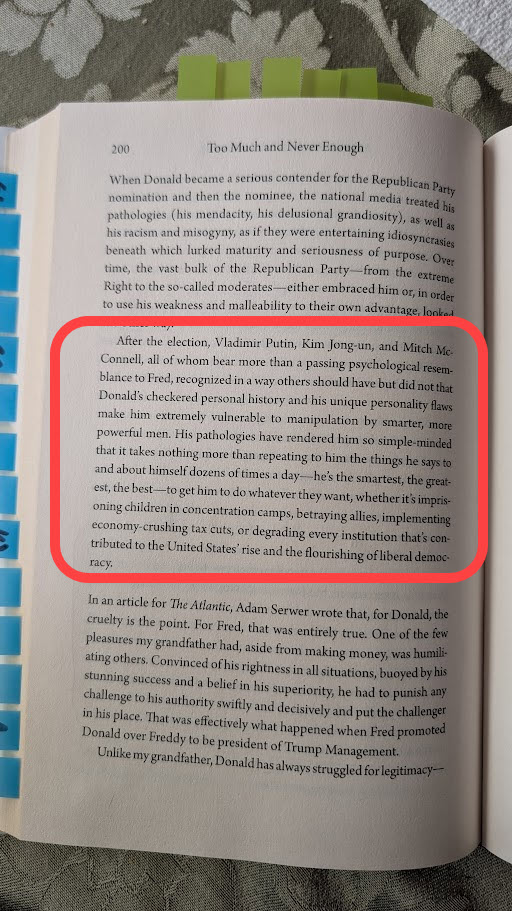
My Personal Vent
In the chapter titled “The Debacle”, Mary describes the cruel tactics that her family exerted on their eldest sibling’s progeny after his death. In particular, Mary’s brother’s youngest son was born with a genetic mutation called KCNQ2 that required extensive medical care for seizures. Mary’s aunts and uncles took away their family medical insurance through the Trump Management company as leverage for them (Mary and Fritz) to sign away their inheritance after Fred Trump Sr’s death.
There is much, much more to this story than what is covered in the book. I will suffice to say that anyone who questions the humanity of another person, and would use their life as in part to negotiate for anything does not understand the basic, inherent right of dignity.
Consider this p.200 quote from David Corn followed by Mary Trump’s own words in her book. Speaking of Donald:
“”Everything is transactional for this poor broken human being. Everything.” It is an epic tragedy of parental failure that my uncle does not understand that he or anybody else has intrinsic worth.”
A Summary and a Warning
The Epilogue is aptly named “The Tenth Circle”, which I believe is a reference to Jodi Picoult’s 2006 novel of the same name that draws heavily from the nine circles of hell described in Dante’s poem, the Inferno. The “tenth circle” symbolizing a kind of suffering not described by Dante.
When the book was published, I’m not sure if the gravity of a possible second term for DJT could be articulated then. It took the Heritage Foundation’s Project 2025, concerted Republican partisanship, a “hype cycle” and social media to bring him back; and we are suffering greatly for it. Trump has a twisted vision of his place in 21st century politics, and will likely never realize how profoundly his flaws have allowed him to be manipulated and used by others for their own purposes.
The real question for us is whether we realize the threat that his administration presents to us now – the real “We the People” – and do we react? Or do we remain silent enough that he manifests his chaos and we truly are just what he calls us all – “the rubes”.
About the Reviewer
You can learn a bit more about me here.
